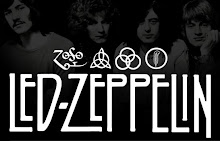Scansion
Scansion is the process of analyzing poetry's rhythm by looking at meter and feet. A foot is a two- or three-syllable division of stresses. Meter is the predominant rhythm of a poem based on the type and number of feet per line.
Syllables are marked either as stressed (/) or unstressed (-) depending upon the pronunciation of a given word within the line. For instance, the word "example" would scan as:- / -
ex am ple
Common Metrical Feet in English
Foot
Syllables
Stress Pattern
Example
iamb
2
- /
pretend
trochee
2
/ -
season
spondee
2
/ /
pyrrhic
2
- -
anapest
3
- - /
unabridged
dactyl
3
/ - -
dangerous
Meter
As stated before, meter is defined by the predominant type of foot and the number of feet within the lines of a poem. For instance, much of English dramatic verse was written in iambic pentameter, or lines of five iambs, because the rhythm most closely approximated natural speech patterns. In fact, unrhymed iambic pentameter was so popular, it had a term of its own: blank verse.
Although these speeches are all written in blank verse, there are other meters as well:
monometer—lines consisting of 1 foot
dimeter—lines consisting of 2 feet
trimeter—lines consisting of 3 feet
tetrameter—lines consisting of 4 feet
pentameter—lines consisting of 5 feet (blank verse)
hexameter—lines consisting of 6 feet (alexandrine)
Lines of more than six feet are rare in English poetry.
Other Helpful Poetry Terms
assonance—repetition or a pattern of similar sounds, especially vowel sounds
caesura—a natural pause or break in a line of poetry, usually near the middle of the line
consonance—repetition of similar consonant sounds, especially at the ends of words
couplet—a pair of lines of the same length that usually rhyme and form a complete thought
enjambment—the running on of the thought from one line, couplet, or stanza to the next without a syntactical break
feminine ending—an extra unstressed syllable at the end of a line
masculine ending—an extra stressed syllable at the end of a line
versification—the system of rhyme and meter in a poem
Close Reading
Close reading is the foundation for studying literature. In the case of these readings, we're looking at the basic definitions of individual words, their literal and figurative uses, fundamental grammar and syntax, and the context in which words or phrases are used. In addition, these readings are all dramatic works; unlike novelists, playwrights are basically limited to dialogue and stage directions to tell their stories. That means the text is more subject to interpretation. We're looking for clues to meaning within the speeches. First, we make our observations. Then, we make inferences based on patterns that we see.
Tuesday, December 7, 2010
Subscribe to:
Post Comments (Atom)

No comments:
Post a Comment